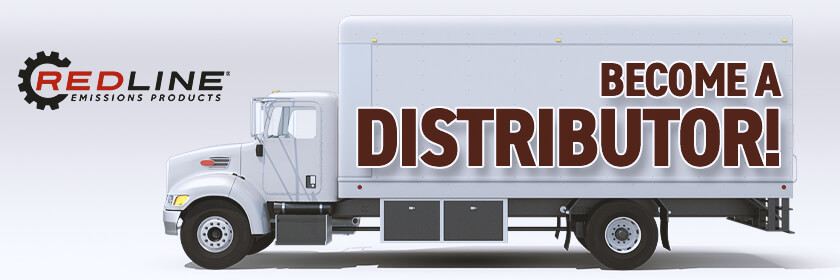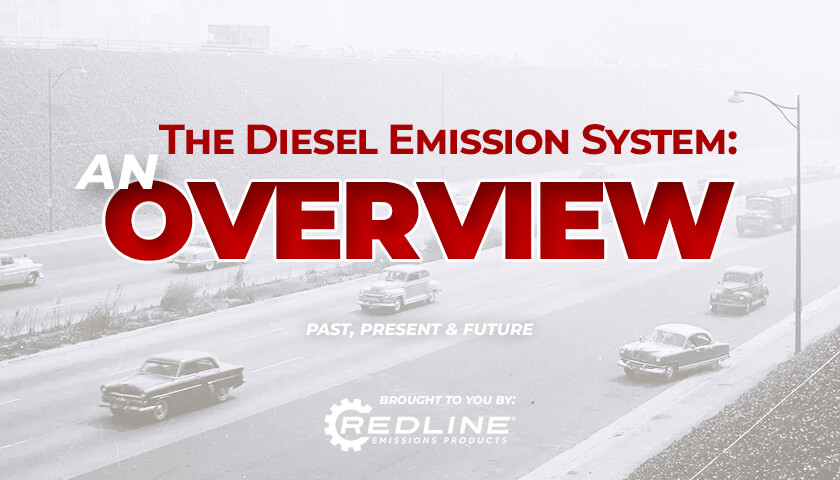
An Overview: The Diesel Emission System:
Prepare for a journey through the ever-evolving landscape of Diesel Emission Systems (DES). This article delves into the significant transformations that have shaped the DES over the years. The path has been far from straightforward, demanding substantial investments in time, effort, and resources to enhance aftertreatment systems for both cars and trucks. Regardless of your stance on these advancements, it is crucial for parts managers and those in the heavy-duty transportation industry to understand the Diesel Emission System’s history, present condition, and it’s future.
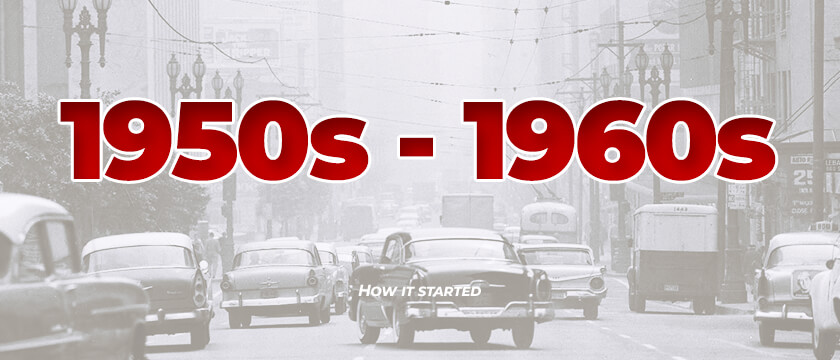
1950s – 1960s: How It Started
In the early 1950s, a study in California highlighted the relationship between vehicles and air pollution, pinpointing car emissions as a primary factor for Los Angeles’s hazy skies. Then cars & trucks released substantial amounts of hydrocarbons, nitrogen oxides, and carbon monoxide. However, with the intervention of the U.S. EPA, standards were established to reduce these emissions, prompting innovative solutions from various transportation sectors.
The EPA’s influence grew, overseeing emission control not only for cars but also for heavy-duty vehicles, trucks, farm machinery, trains, boat engines, etc. Lowering vehicle emissions involved multiple strategies, from enhanced engine technologies to improved fuel quality. The path towards better air quality necessitated a combined effort from the EPA, automotive and fuel industries, local authorities, transport experts, and the public.
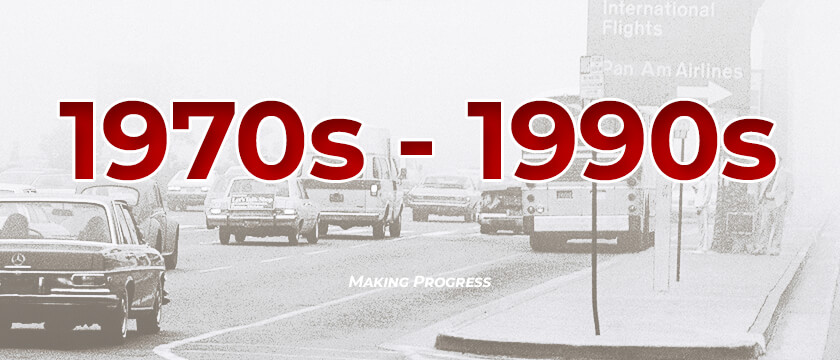
1970s – 1990s: The Early Years
In the 1970s, the EPA initiated fuel economy testing, leading to the development of emission-reducing technologies like exhaust gas recirculation valves. Transportation controls and regulations to decrease lead in gasoline were implemented. The Energy Policy Conservation Act set fuel economy standards, and catalytic converters were introduced, reducing vehicle emissions. The decade concluded with revisions to the Clean Air Act in 1977, setting the stage for future emissions reductions.
The 1980s saw advancements in catalytic converter efficiency, emission standards, and Inspection and Maintenance programs. Stricter regulations targeted NOx and particulate matter, while lead content in gasoline was significantly reduced. The decade concluded with fuel volatility limits set in 1989 to minimize evaporative emissions.
The 1990s focused on lower tailpipe standards, oxygenated gasoline, and efforts like the Partnership for a New Generation of Vehicles. Lead was successfully banned from gasoline in 1996. Stricter emissions standards were enforced for various engines and vehicles, with sulfur standards lowered in gasoline. The EPA also set fuel volatility limits and regulations for large marine diesel engines.
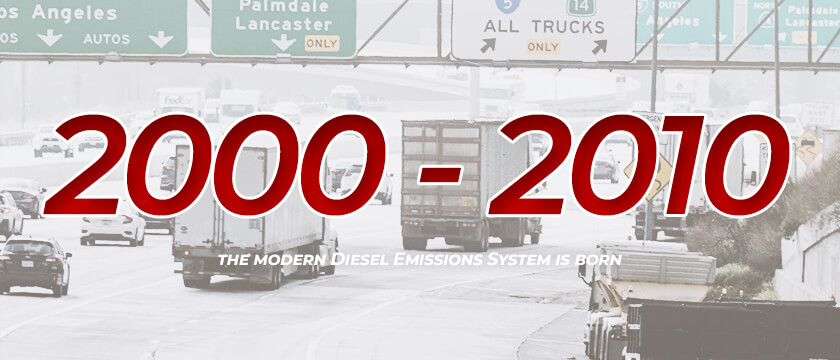
2000 – 2010: Introduction of the Diesel Emissions System
From 2000 to 2006, the EPA tightened emission regulations for nonroad small engines, introduced toxic emission standards for mobile sources, and launched various programs promoting eco-friendly transportation. In 2006, the EPA revamped fuel economy estimates to provide more accurate information to consumers.
From 2007 to 2010, the EPA significantly ramped up efforts to reduce air toxins, boost renewable fuel integration, and combat greenhouse gas emissions.
In 2007, the agency issued regulations that, among other measures, lowered benzene content in gasoline and reduced emissions related to cold temperatures and portable fuel containers. Additionally, the national Renewable Fuel Standard Program was established, pushing for a higher inclusion of renewable fuels in vehicle fuel, aligning with the Energy Policy Act of 2005’s goals for increased energy independence.
The focus in 2008 was on diesel emissions, with the EPA setting rigorous standards to curtail PM and NOx emissions from locomotives and marine diesel engines. This multifaceted program targeted both existing and newly built engines, emphasizing the use of high-efficiency after-treatment technology. The year also saw the EPA announce almost $50 million in grants for clean diesel projects, ensuring cleaner diesel operations nationwide. Additionally, onboard diagnostic systems were mandated for large trucks to monitor emission control systems and enhance repair and maintenance.
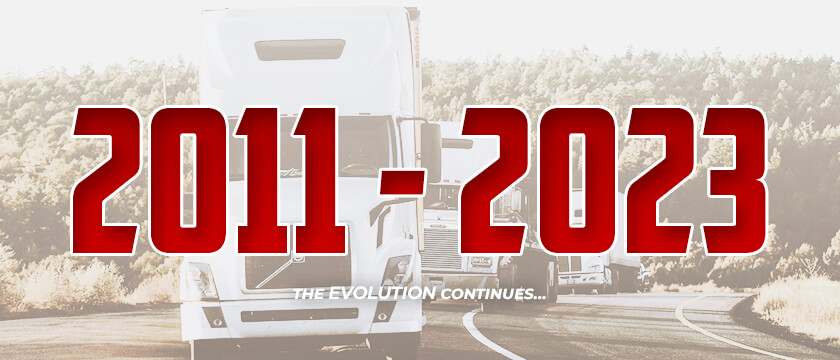
2011 – 2023: The Diesel Emissions System Evolves
The EPA and the NHTSA (part of the Department of Transportation) set new standards for light-duty vehicles from 2012 to 2016 to improve fuel economy and further decrease emissions. The EPA also gave a conditional nod to using E15 in vehicles from model year 2007 onwards, contingent on health-effects testing. This move supported the 2007 Energy Independence and Security Act.
From then till today we’ve seen continued improvements to aftertreatment systems as manufacturers have developed better, more reliable components. They learned some valuable lessons from early technical missteps. This evolution resulted in the modern Diesel Emissions Systems we have today. The DES currently comprises several components including the Exhaust Gas Recirculation (EGR), Diesel Oxidation Catalyst (DOC), Selective Catalytic Reduction (SCR), and of course, the DPF. You can get the basics for these aftertreatment components here.
During this time frame, DPF deletes became popular with some commercial truck owners who were frustrated by these mandated and expensive changes to their exhaust systems. Learn more about this topic in our recent REP blog article.
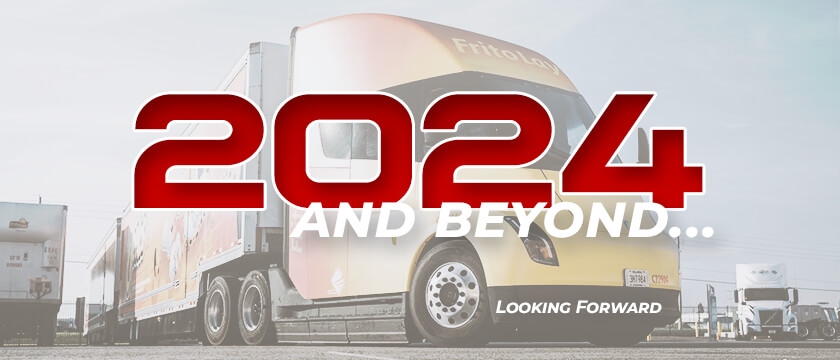
2024 and Beyond: The Outlook for Diesel Emissions Regulations in North America
Looking ahead, to further improve air quality and reduce vehicle emissions, governments in the United States and Canada are implementing even stricter regulations on diesel emissions for heavy-duty trucks. These regulations are aimed at reducing pollutants such as nitrogen oxides (NOx), particulate matter (PM), and carbon dioxide (CO2) from these vehicles.
United States:
In the United States, the Environmental Protection Agency (EPA) has finalized a new rule that will significantly reduce NOx emissions from heavy-duty trucks starting in model year 2027. The rule will require manufacturers to certify diesel engines to a NOx idling emission standard of 10 grams per hour (g/hr) in 2024-2026, and 5 g/hr in 2027 and later model years. In lieu of meeting the standard, engines may be equipped with an engine shutdown system.
The EPA has also proposed a new rule that would set more stringent greenhouse gas (GHG) emission standards for heavy-duty vehicles starting in model year 2027. The proposed rule would require manufacturers to reduce GHG emissions by 40% from 2027 to 2030, and by 50% from 2030 to 2032.
Additionally, the California Air Resources Board (CARB) is finalizing technical work to support the adoption of their heavy-duty (HD) Low NOx Omnibus Regulation, which aims to achieve a 90% reduction from current NOx emissions limits by 2027 and to establish a more robust certification method that includes better in-use testing protocols.
Canada:
In Canada, the federal government has implemented the Greenhouse Gas Emission Regulations for New On-Road Heavy-Duty Vehicles and Engines, which sets standards for GHG emissions from heavy-duty vehicles and engines sold in Canada. The regulations are aligned with the EPA’s Phase 2 GHG rule for model years 2027 to 2030.
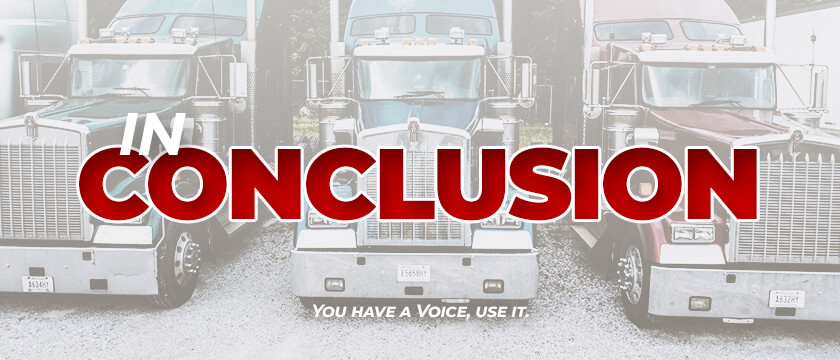
In Conclusion
The implementation of stricter regulations on diesel emissions for heavy-duty trucks is expected to have a significant impact on the trucking industry in both the United States and Canada. Manufacturers will need to invest in new technologies to meet the new standards, and trucking companies may need to upgrade their fleets of vehicles. However, the benefits of these regulations are expected to outweigh the costs. Fewer exhaust emissions will lead to reduced health problems and respiratory illnesses, and better air quality.
Diesel emissions technology has certainly advanced over the years. There have been many improvements in fuel efficiency and lowering emissions, but there have been growing pains and costs in the process. Well-meaning politicians and bureaucrats often don’t understand the implications of the changes they are proposing and passing into law. It’s important to make your voice heard by voting and peacefully communicating with the “powers that be” so that the lofty goals of cleaner air can be reached with a balanced and common sense approach.
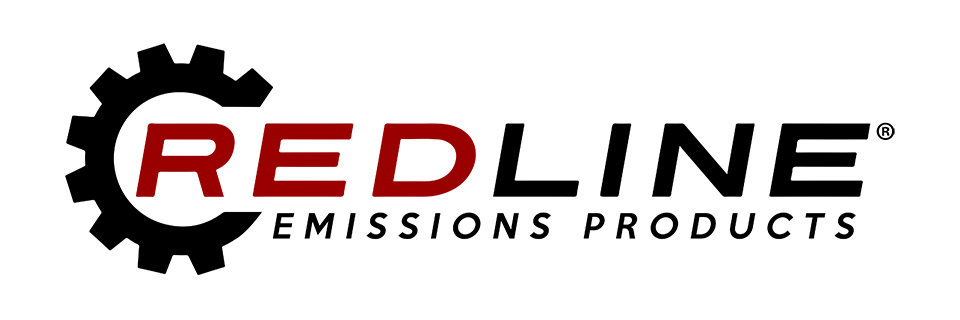
For inquiries or more information on our aftertreatment parts, DFP Cleaning equipment, or how to become an authorized REP distributor, feel free to contact us. We are here to assist you and provide the support you need every step of the way.
Want to find out about becoming a Redline Emissions Products® dealer? Contact Anthony Soto, National Sales Manager for REP to find out more. Call 888-295-4670
Need Tech Support or need help troubleshooting a DPF problem? No problem! Contact REP Support at 1-888-564-4209



